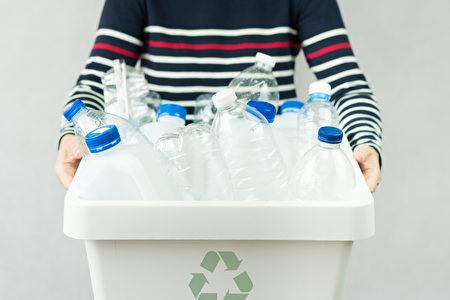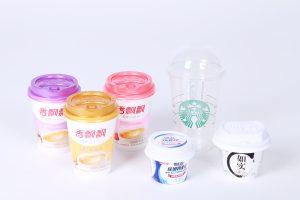关于聚丙烯(PP)塑料的一切

Polypropylene (PP) is a thermoplastic “addition polymer” made from the combination of propylene monomers. It is used in a variety of applications to include packaging for consumer products, plastic parts for various industries including the automotive industry, special devices like living hinges, and textiles.
The major end users of polypropylene are the packaging industry, which consumes about 30% of the total, followed by the electrical and equipment manufacturing, which uses about 13% each. Household appliances and automotive industries both consume 10% each and construction materials follows with 5% of the market.
One of the major benefits of Polypropylene is that it can be manufactured (either through CNC or injection molding, thermoforming, or crimping) into a living hinge. Living hinges are extremely thin pieces of plastic that bend without breaking (even over extreme ranges of motion nearing 360 degrees).
They are not particularly useful for structural applications like holding up a heavy door but are exceptionally useful for non load-bearing applications such as the lid on a bottle of ketchup or shampoo. Polypropylene is uniquely adept for living hinges because it does not break when repeatedly bent.
One of the other advantages is that polypropylene can be CNC machined to include a living hinge which allows for faster prototype development and is less expensive than other prototyping methods. Creative Mechanisms is unique in our ability to machine living hinges from a single piece of polypropylene.
Another advantage of Polypropylene is that it can be easily copolymerized (essentially combined into a composite plastic) with other polymers like polyethylene. Copolymerization changes the material properties significantly, allowing for more robust engineering applications than are possible with pure polypropylene (more of a commodity plastic on its own).
The characteristics mentioned above and below mean that polypropylene is used in a variety of applications: dishwasher safe plates, trays, cups, etc, opaque to-go containers, and many toys.

What are the Characteristics of Polypropylene?
Some of the most significant properties of polypropylene are:
- Chemical Resistance: Diluted bases and acids don’t react readily with polypropylene, which makes it a good choice for containers of such liquids, such as cleaning agents, first-aid products, and more.
- Elasticity and Toughness: Polypropylene will act with elasticity over a certain range of deflection (like all materials), but it will also experience plastic deformation early on in the deformation process, so it is generally considered a "tough" material. Toughness is an engineering term which is defined as a material's ability to deform (plastically, not elastically) without breaking..
- Fatigue Resistance: Polypropylene retains its shape after a lot of torsion, bending, and/or flexing. This property is especially valuable for making living hinges.
- Insulation: polypropylene has a very high resistance to electricity and is very useful for electronic components.
- Transmissivity: Although Polypropylene can be made transparent, it is normally produced to be naturally opaque in color. Polypropylene can be used for applications where some transfer of light is important or where it is of aesthetic value. If high transmissivity is desired then plastics like Acrylic or Polycarbonate are better choices.
Polypropylene is classified as a “thermoplastic” (as opposed to “thermoset”) material which has to do with the way the plastic responds to heat. Thermoplastic materials become liquid at their melting point (roughly 130 degrees Celsius in the case of polypropylene).
A major useful attribute about thermoplastics is that they can be heated to their melting point, cooled, and reheated again without significant degradation. Instead of burning, thermoplastics like polypropylene liquefy, which allows them to be easily injection molded and then subsequently recycled.
Why is Polypropylene used so often?
Polypropylene is used in both household and industrial applications. Its unique properties and ability to adapt to various fabrication techniques make it stand out as an invaluable material for a wide range of uses.
Another invaluable characteristic is polypropylene’s ability to function as both a plastic material and as a fiber (like those promotional tote bags that are given away at events, races, etc).
Polypropylene’s unique ability to be manufactured through different methods and into different applications meant it soon started to challenge many of the old alternative materials, notably in the packaging, fiber, and injection molding industries. Its growth has been sustained over the years and it remains a major player in the plastic industry worldwide.
What Are The Different Types of Polypropylene?
There are two main types of polypropylene available: homopolymers and copolymers. The copolymers are further divided into block copolymers and random copolymers.
Each category fits certain applications better than the others. Polypropylene is often called the “steel” of the plastic industry because of the various ways in which it can be modified or customized to best serve a particular purpose.
This is usually achieved by introducing special additives to it or by manufacturing it in a very particular way. This adaptability is a vital property.
Homopolymer polypropylene is a general-purpose grade. You can think of this like the default state of the polypropylene material. Block copolymer polypropylene has co-monomer units arranged in blocks (that is, in a regular pattern) and contain anywhere between 5% to 15% ethylene.
Ethylene improves certain properties, like impact resistance while other additives enhance other properties.
Random copolymer polypropylene – as opposed to block copolymer polypropylene – has the co-monomer units arranged in irregular or random patterns along the polypropylene molecule.
They are usually incorporated with anywhere between 1% to 7% ethylene and are selected for applications where a more malleable, clearer product is desired.
What are the Advantages of Polypropylene?
- Polypropylene is readily available and relatively inexpensive.
- Polypropylene has high flexural strength due to its semi-crystalline nature.
- Polypropylene has a relatively slippery surface.
- Polypropylene is very resistant to absorbing moisture.
- Polypropylene has good chemical resistance over a wide range of bases and acids.
- Polypropylene possesses good fatigue resistance.
- Polypropylene has good impact strength.
- Polypropylene is a good electrical insulator.
What are the Disadvantages of Polypropylene?
- Polypropylene has a high thermal expansion coefficient which limits its high temperature applications.
- Polypropylene is susceptible to UV degradation.
- Polypropylene has poor resistance to chlorinated solvents and aromatics.
- Polypropylene is known to be difficult to paint as it has poor bonding properties.
- Polypropylene is highly flammable.
- Polypropylene is susceptible to oxidation.
Despite its shortcomings, polypropylene is a great material overall. It has a unique blend of qualities that aren’t found in any other material which makes it an ideal choice for many projects.
| Property | Value |
|---|---|
| Technical Name | Polypropylene (PP) |
| Chemical Formula | Polypropylene Molecular Composition (C3H6)n |
| Resin Identification Code (Used For Recycling) | Polypropylene (PP) Resin Identification Code 5 (For Plastic Recycling Purposes) |
| Melt Temperature | 130°C (266°F) |
| Typical Injection Mold Temperature | 32 - 66 °C (90 - 150 °F) *** |
| Heat Deflection Temperature (HDT) | 100 °C (212 °F) at 0.46 MPa (66 PSI) ** |
| Tensile Strength | 32 MPa (4700 PSI) *** |
| Flexural Strength | 41 MPa (6000 PSI) *** |
| Specific Gravity | 0.91 |
| Shrink Rate | 1.5 - 2.0 % (.015 - .02 in/in) *** |

